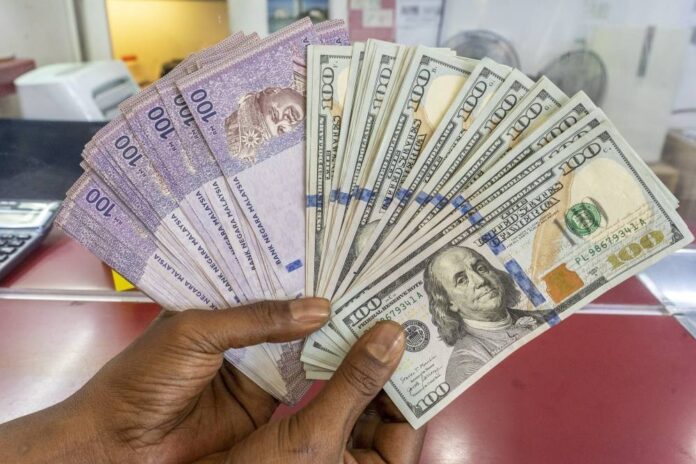BNM governor Tan Sri Nor Shamsiah Mohd Yunus said the ringgit depreciation would impact the cost of imports, but assured that only 8.0 per cent of imports are consumption goods. — Picture by Shafwan Zaidon
Follow us on Instagram, subscribe to our Telegram channel and browser alerts for the latest news you need to know.
KUALA LUMPUR, Nov 11 — The movement of the ringgit against the US dollar should not be the barometer for determining the health of Malaysia’s economy, said Bank Negara Malaysia (BNM) governor Tan Sri Nor Shamsiah Mohd Yunus.
She said the ringgit depreciation has been driven by the strong US dollar due to the US Federal Reserve’s (Fed) aggressive tightening of monetary policy, and this downtrend was in line with major and regional currencies.
“It does not mean that the Malaysian economy is weak and in a crisis.
“As such, it is too simplistic to use the exchange rate as a barometer for the health of the economy without looking at other indicators,” she told a press conference on the third quarter gross domestic product (GDP) results here today.
Nor Shamsiah said year-to-date, the ringgit has depreciated by 11.2 per cent against the greenback, in line with regional trends, adding that the performance of the ringgit also needs to be collectively assessed against the currencies of Malaysia’s major trade partners.
The ringgit’s nominal effective exchange rate or nominal effective exchange rate (NEER) registered a much smaller depreciation of 2.0 per cent.
“Given the ongoing global risks and the projected path of US monetary policy, the strength of the US dollar is likely to persist for some time.
“As these external uncertainties recede, the ringgit should adjust to reflect the underlying fundamentals of the economy,” she said.
The central bank chief added that purposeful structural reforms would also shore up confidence in Malaysia’s growth prospects, which will eventually support a real appreciation in the exchange rate.
She noted that the GDP has been growing for four consecutive quarters since the third quarter of 2021, with the unemployment rate continuing to decline for 14 consecutive months to 3.6 per cent in September from 4.8 per cent in July 2021.
The financial performance of corporations and businesses remains healthy and the public continues to spend, she noted, while indicators such as retail and car sales have exceeded pre-pandemic levels.
The banking system remains resilient and financing growth remains supportive of economic activity, she added.
“Clearly, Malaysia is not in an economic crisis. That said, we acknowledge there are still some parts of our economy that have yet to return to pre-pandemic conditions,” she said.
Impact of ringgit depreciation
Nor Shamsiah Yunus said the ringgit depreciation would impact the cost of imports, but assured that only 8.0 per cent of imports are consumption goods.
The impact of the ringgit depreciation on inflation could be higher during the current period because of the prolonged environment of elevated costs, she added.
Exchange rate pass-through also tends to be stronger for directly imported fresh food items, such as beef, although these items have a relatively smaller weight in the CPI basket, she said.
“In addition to the exchange rate, food prices are also affected by other more dominant global and domestic factors, such as raw materials, logistics, and labour costs.
“The recent moderation in global commodity prices has helped to ease input costs and offset the impact of exchange rate depreciation on food prices. This contributed to an easing momentum in food inflation in recent months,” she noted.
Nevertheless, she said as the cost environment remains uncertain, consumer prices could remain elevated despite the easing trend in global commodity prices.
External position remains manageable
The central bank chief said the depreciation of the ringgit versus the US dollar has led to a higher value of foreign currency assets, lending support to Malaysia’s external position.
She said the risks from foreign currency external debt are largely contained, as about 68 per cent of debts are either subject to prudential safeguards or are on flexible terms.
“For instance, as of end-September 2022, onshore banks’ external debt accounted for only 7.7 per cent of total funding. Banks have to comply with liquidity management prudential standards.
“Additionally, their sizeable foreign currency liquid assets are sufficient to cover up to 2.6 times of foreign currency external debt-at-risk that are more susceptible to withdrawal and rollover risk,” she said.
Malaysia’s foreign currency external assets remain sizeable and are sufficient to cover up to 2.1 times foreign currency external liabilities.
At present, 31.5 per cent of corporate external debt is in the form of intragroup loans, which are generally on flexible and concessionary terms. — Bernama



